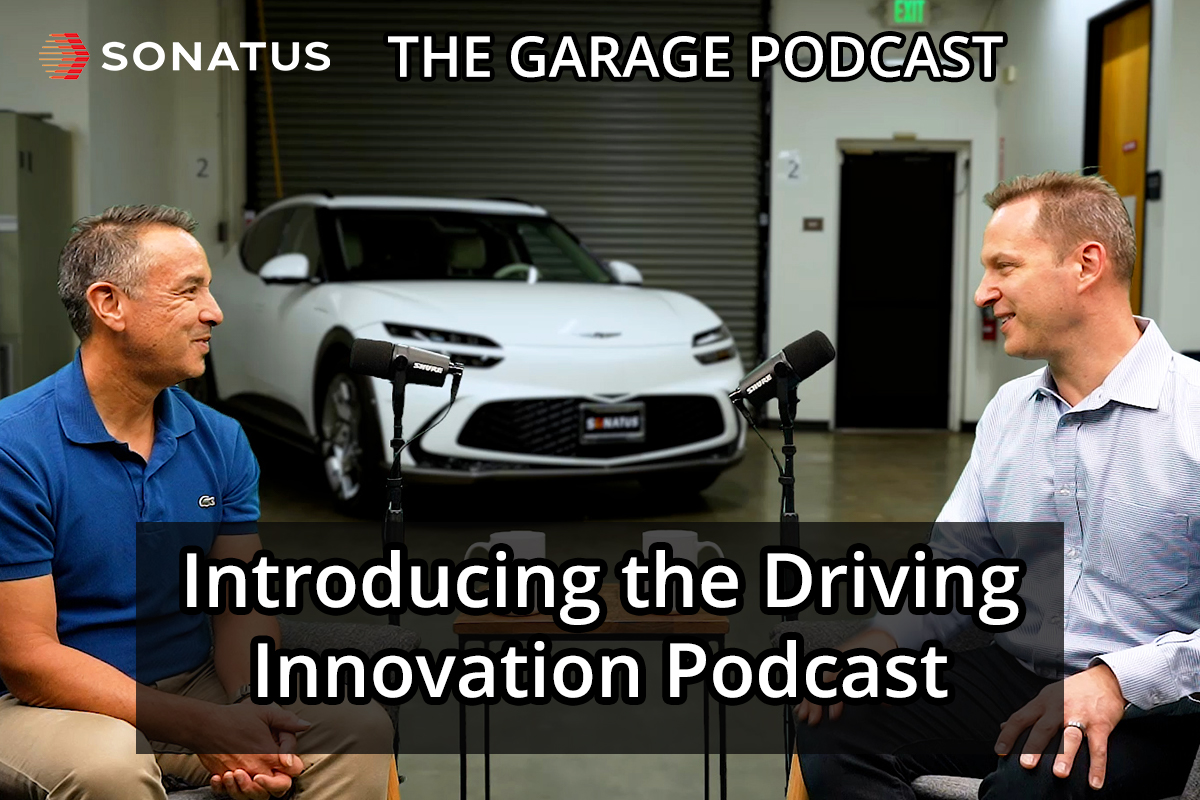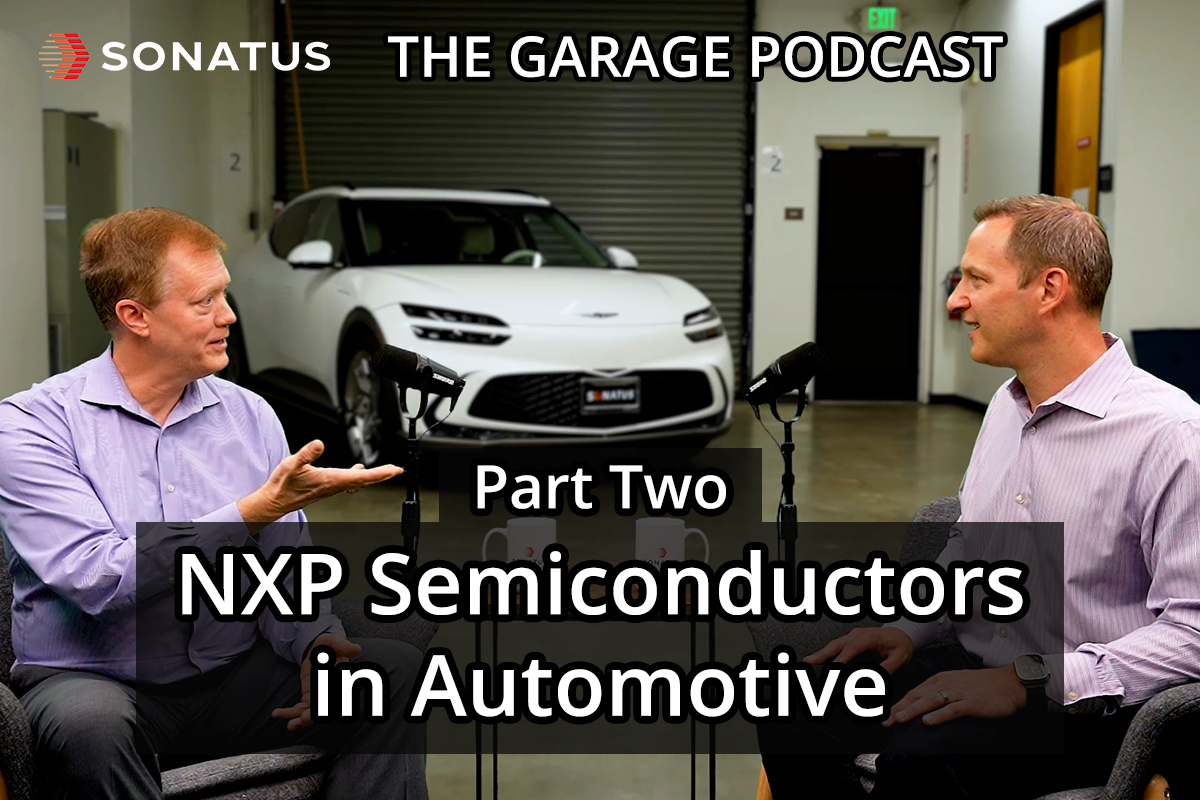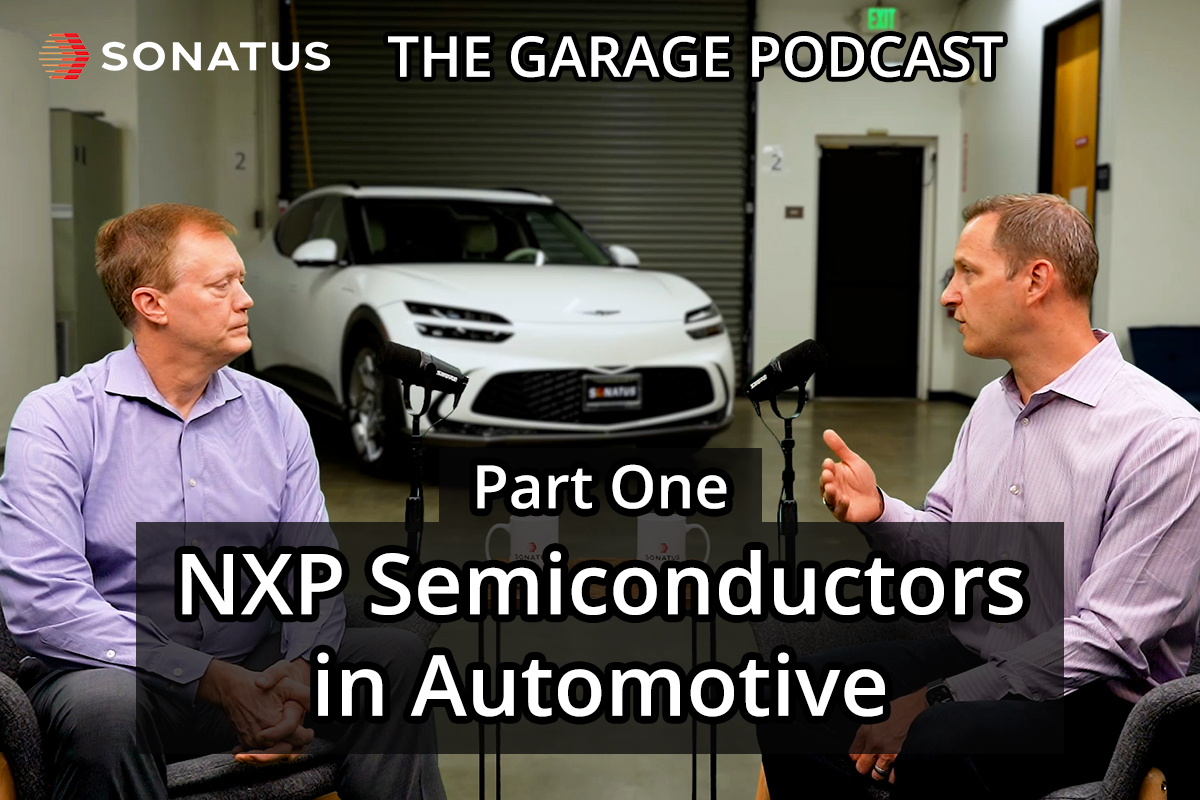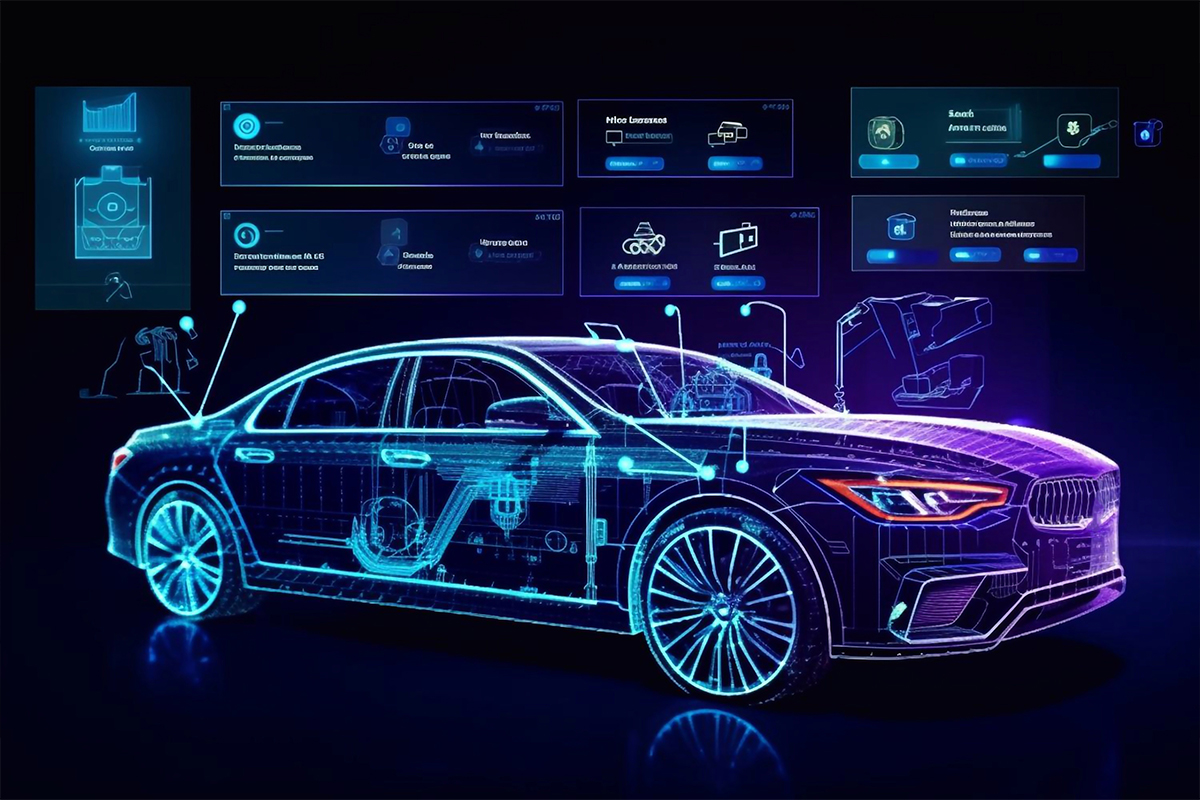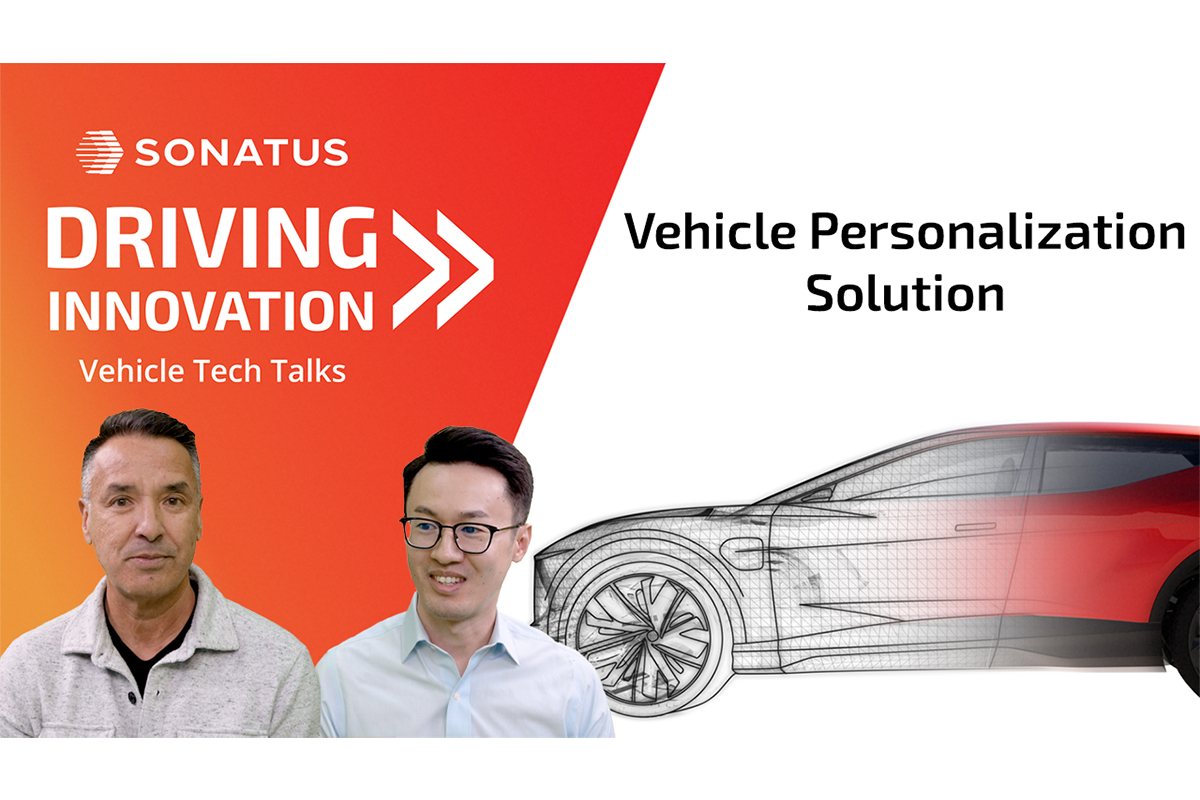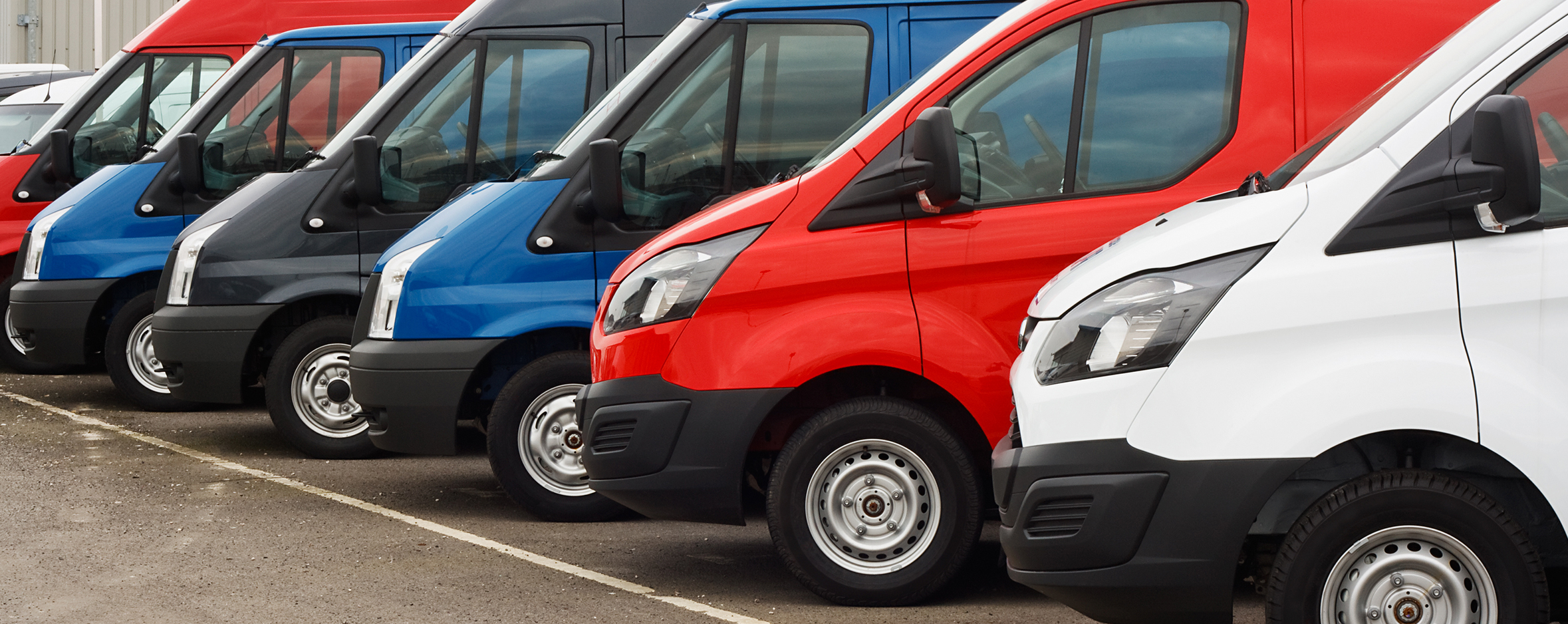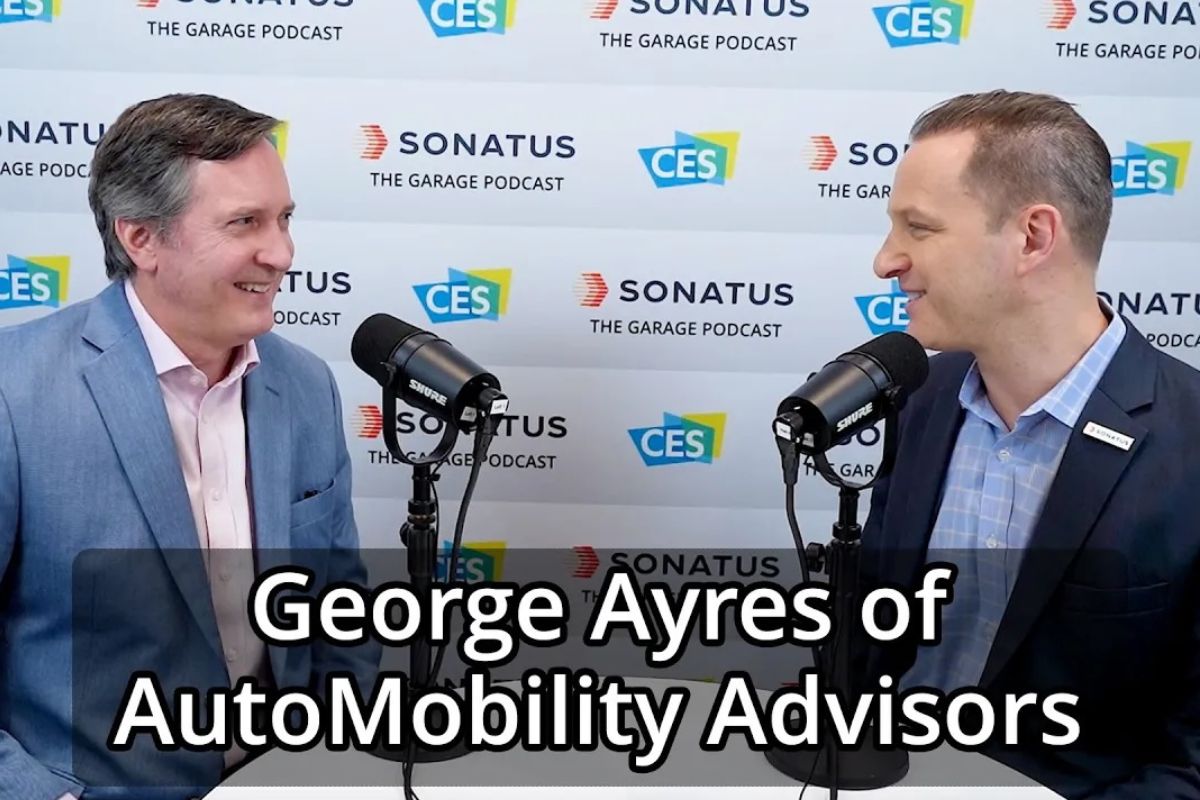Introduction
JOHN: Welcome to The Garage. We’re recording live from CES 2024 with Auto Mobility Advisors. Let’s go! Welcome to The Garage. Today we’re recording live at the Consumer Electronics Show 2024 in our podcast studio at the Sonatus booth. We’re pleased today to welcome George Ayers, Founder and Managing Director of Auto Mobility Advisors. George, welcome to The Garage.
GEORGE: Thanks, John. Great to be here with Sonatus.
JOHN: Thank you so much, and we had a great chance to meet in October. We’re both on the AutoTech committee together, and it was wonderful to talk with you, and I said, “I have to have George on the podcast!” So let’s begin by…could you tell us a little bit about yourself and about your company?
Meet George Ayres
GEORGE: Sure, yeah. I’ve been in automotive for 25-plus years, Ford Motor Company for many years, Jaguar cars, mostly product planning, sales and marketing roles, right? But then I moved into technology at Verizon, Verizon Telematics in particular, and then IBM in their IoT group. So the last 15 years in automotive technology, so it’s really great to be at Sonatus where there’s a heck of a lot of automotive technology happening.
JOHN: It’s kind of you to say, and tell us about Auto Mobility Advisors. What do you work on? What kind of things do you do?
GEORGE: Sure, yeah. We started about two and a half years ago. Part of it was my interest in being involved with the startup world in automotive technology, all the things happening. We know all about EVs, but there’s a lot of other things happening, right? Software-defined vehicle, connectivity, mobility, remote access, how do I get involved in that? Well, one way to do that is to kind of start my own group, to work with all those companies. And, you know, believe it or not, we’re now to the point where we have nine clients, and we are doing that kind of work. So really exciting.
JOHN: Fantastic! We’re gonna get into that and talk a lot about this SDV and other topics. I always like to have my guests on the show tell us—we’d like to have our audience get to know–tell us something interesting about you.
GEORGE: Sure. Something most people don’t know is I’m an avid poetry fan. I have about 400 books of poetry. I’ve taken many classes and written many, in fact, had some published. And the genesis for that was in early 90s, when I was climbing the corporate ladder, and all I was reading was business books, I realized that I gotta do something different, and I picked up a poetry book at an airport, and never looked back.
JOHN: That’s interesting. I’m guilty of reading too many business books.
GEORGE: No, I still read business books, for sure.
JOHN: I guess I always like to give a–respond as well, but something interesting about me and I have to keep thinking of something new every time, and the one that I think makes sense here is I have a ton of cookbooks and cooking books, and then the associated cookware as well. I’ve got quite a lot of cooking books of every type, and so I love to cook.
GEORGE: So you’re always looking for new recipes and new things to make.
JOHN: I am, and when I find what I like I grab on and I make sure I capture it for the future. And I like to share as well. I like to share recipes.
GEORGE: Great, I’m interested.
Trends in Software-Defined Vehicles
JOHN: Very good. So let’s get into auto technology. I mean, Sonatus and in this podcast, we really focus on software-defined vehicles.
GEORGE: Yeah.
JOHN: And the growing role that software can have in doing new and exciting things. So let’s start with maybe big picture, what are some of the trends that you think maybe are important, or that you’re kind of spending time focusing on?
GEORGE: Sure. I mean, you read a lot about automakers trying to do software-defined vehicles, but implementing it is different than saying you’re going to do it, right? And you know that better than anybody, and Sonatus is really well placed to do that. But of course, that’s going to be part of the bigger world of automotive, where there’s powertrain changes, like electrification and hydrogen, etcetera. Connected services, where I kind of last worked and originally my technology world, and now still do, is growing and growing, you can’t have an EV without a connected car, for example. They have to work together. And then remote access of vehicles, last mile, all those kinds of things, software is going to run all of that. And so doing it right, implementing it right, is going to be important. So what you read and what’s actually happening aren’t always matching, and some companies, I think, like Sonatus are out there pushing the envelope, so it’s great to see.
Shift to electrification
JOHN: Yeah, thank you so much. We’re trying, and at the show this week, we’re trying to show a lot of practical examples. It’s not sort of a science project. It’s not just, “Oh, you imagine you could do software for–” these are real problems, like diagnosing problems or providing better fleet management and better interaction with new and advanced technologies like vehicle lighting, and so on. So we’re really pleased to be able to share that with you. So you also talked about electrification, and I think that shift to electrification, we’ve got a fantastic demo outside showing an EV skateboard, which most people never get to see the inside of the EV. It seems to me that the shift to EVs is giving OEMs the chance to kind of rethink some of their decisions because you’re not just gonna re-put the same old software on top of a new chassis, so I feel like it’s an inflection point in the industry where people have a chance to sort of do something fresh.
GEORGE: Yeah, absolutely, I think two dimensions, right? So the EV configuration means your “package,” as we call it in the auto business can change, right? So Kia, for example, right across the hall, has some really interesting vans – purpose-built vehicles – that are you know, enabled, because there’s no driveshaft underneath and rear axle and all the usual tools, right? So there’s that change for automakers, so we’re gonna see lots of interesting styles of vehicles because they can, but of course, they should take advantage of the opportunity that now we’re using EV technology that software should change too, and run that differently, and I think that’s a huge opportunity. You know, one of the things I read about, for example, the Tesla cybertruck, the most interesting thing is the 42-volt electric system, right? Which is what we’ve been talking about for 10 years in the car business, and now we start to see it actually happening, enabling technology.
JOHN: A clean sheet of paper allowed them to adopt something everybody always wanted to adopt. But because of legacy, couldn’t.
GEORGE: Yeah, right. And, but others can do it eventually, if they kind of move in that direction. High performance compute is going to help in that, for example. So there’s so many trends that mean software is where the action is right now.
JOHN: You’ve seen Ford, I know some senior executives at Ford, they’ve kind of reorganized the company to some central technology, as well as the ICE platform and the EV platform, not to make any one of them better or worse than the other, but to allow them to have some different decisions. I think those are–that’s my take on it. And I think that’s a smart move.
GEORGE: Yeah. I think it lets them invest in EV, and kind of cordon off that investment for you know, Wall Street to understand, so they can put a lot of money in EV and still make a lot of money selling F-150s. I mean, I worked for Ford for 20 years, so I have a great interest in seeing them be successful, but they also, you know, they can be innovative at software level on both ICE and EV.
JOHN: That’s right.
GEORGE: They don’t have to just be an EV company.
JOHN: Absolutely right. And that’s a really interesting point you make because people always come into our booth. And they ask us, you know, they want to learn about us. They say “Oh, you’re an EV company,” we say, “No, no, no.” We have–our software is in ICE platforms, and our software is in EV platforms. Now EVs give you a lot more freedom. I think people will tend to innovate more on EVs, but there’s nothing fundamental about our technology, for example, and many other software’s that couldn’t also be applied to ICE.
GEORGE: And the services that the customers want are the same. So ICE, PHEV, EV, hydrogen, doesn’t matter what the powertrain is, I think the services are the same. The outside world, you know, we kind of in the car business, we kind of think just about the car business sometimes, but we forget people are walking around with mobile phones in their hand, and they’re doing lots of other new features with those. They wanted to integrate it with their vehicle, no matter what powertrain is being used.
Vehicle personalization
JOHN: That’s right. That’s right. That portability aspect is important. One of the things we’re talking about this week of the show is vehicle personalization. Yeah. Because, you know, people sometimes people say–I had a Roger Lanctot from Tech Insights here yesterday and we were lamenting the fact that people say vehicles are smartphone on wheels. So we were agreeing strongly that that’s a bad characterization. But the one aspect that there’s some similarities: people expect personalization.
GEORGE: Yeah.
JOHN: People expect– because smartphones give people…like my phone and my wife’s phone are utterly different, right? People expect to have the experience they want. But when you go into a car, it’s always the same. So how do you give people the ability to have an experience that’s unique to them, whether that’s lighting, whether that’s performance? Whether that’s, you know, other kinds of, well, audio, those kinds of things.
GEORGE: Sure, and it’s getting easier to do that, right? When I was in product planning, it was the seat memory button. That’s about as personalized as you got, right? You could have a one and a two. Yeah. So my wife could have the one and I would have the two. I never did the one, of course. So ultimately, now with smartphones and Bluetooth connectivity to the car, the car knows it’s me when I get in. It should. And everything can change.
Enabling a Vehicle App Store
JOHN: That’s right. We’re showing the solution, which we just announced last month, which we’re really proud of which allows OEMs… because Sonatus is really about putting the power in the hands of the OEMs, enabling them and helping them do their work faster and quicker. But this platform allows OEMs to effectively deliver a kind of an App Store-like experience. I was telling my engineers I mean, think about Steve Jobs, he had this iPhone idea, and the App Store, arguably the most powerful part. I mean, the phone is amazing, right? But the App Store is the genius. It’s created, like a trillion dollars of market value.
GEORGE: It wasn’t just the device. It was everything behind it.
Ongoing engagement with drivers
JOHN: It enabled all this massive ecosystem of players. So we’re providing the ability to put a kind of an App Store model where an OEM can provide capabilities to the user. Whether that’s free or for a fee, it’s up to them to decide because OEMs will come down in different places on that. But I think it’s all about ongoing engagement and customer satisfaction, and you’re seeing that with Tesla, of course. Tesla is doing these ongoing updates, and customers are like “my car keeps getting better.” But most cars aren’t doing that.
GEORGE: Yeah, no. I think the big fundamental shift for certainly legacy carmakers is their historical position is build a product, sell it to the dealer, they didn’t even sell it to the customer, they sold to the dealer who sold it to the customer. And then they had some liability around warranty and that was about it. But now they need engagement with the customer for the life of the vehicles. Right? BMW does 10 years of connected services. EV warranties are eight years long. Not four or five.
JOHN: Right.
GEORGE: They’re going to be hooked to the customer for a long time and they want to be hooked to the customer because they want to be services companies.
JOHN: That’s right.
GEORGE: But they don’t know how to be services companies, and they need enabling partners like Sonatus to help them figure out how to do that, and push those features out in the world.
Modern fleet management
JOHN: That’s great. We talked a little bit about fleet management, and I think we spoke the other day that fleet management is a, it’s an important… it’s still it’s been around for a long time.
GEORGE: Yeah.
JOHN: So it’s not new, but it’s kind of stale.
GEORGE: Yeah.
JOHN: And I think it feels to me like with the growing diversity of whether it’s delivery fleets or commercial fleets, it feels like that’s ripe for innovation. What’s your take on fleets?
GEORGE: I think it’s really changing pretty fast. Last mile drives a lot of that, as you mentioned. In my experience, when I was at Verizon, we had a company that we worked with called Network Fleet, connected fleet services, you know, that kind of thing. There’s fleet management companies. Those didn’t always work together. I think they’re starting to do that much more. Fleet is consolidating. Big companies like Lease Plan and ALD merged last year, and now they have 3.5 million cars around the world in 42 countries. That’s a lot of vehicles.
JOHN: There’s many different kinds of fleets, whether it’s commercial or rental cars, or like you said, leasing fleets.
GEORGE: Corporate fleets, right? And I lived in the UK for four years, and people would have a company car as part of their pay, that’s as a corporate fleet. Light-duty vehicle, normal, you know, for all intents and purposes, it looks like a personal car.
JOHN: Right.
GEORGE: So there’s a lot going on. And then I think EVs are also being driven by fleets because fleets see the opportunity for total cost of ownership reduction by using an EV versus an ICE Vehicle, just because of the maintenance cost.
JOHN: Maintenance is so much easier.
GEORGE: Right? And if I can have software that allows me high personalization for the fleet driver, and something like Sonatus is doing where I simultaneously can tell the fleet manager about that same experience. That’s pretty interesting.
JOHN: Because you want to protect the residual value of the vehicle.
GEORGE: The asset.
Reducing commercial downtime
JOHN: You also want to make sure that they’re not ignoring maintenance needs, for example, for safety as well. And then we also have been spending a lot of time talking about commercial trucking as well, whether it’s light or heavy commercial trucking, where the downtime from commercial trucking is a huge cost. So if you can be proactive in avoiding downtime, by staging parts or staging service in the next waystation. So you don’t have to take the vehicle off the road, but you plan ahead, that can be incredible ROI.
GEORGE: So that’s a great example. I had some experience when I was at IBM, I worked with Navistar for a couple of years and they have a connected trucks program called On-command Connection. And they were working on something called Uptime, Uptime Center, basically, which did exactly that. It used the connected truck signals to know what was happening and where the truck was, but also the condition of the truck.
JOHN: Right.
GEORGE: And diagnostic trouble codes and things like that, and then they would stage the parts at the right repair shop where the trained technician is, because it’s not just enough to say I have the part, and they would do it en route. So the driver or the company, rather, that was transporting wouldn’t lose that valuable time, right? They could say, “Well, you started to have an issue in Kansas City, but we’re going to fix it in Oklahoma City.”
JOHN: Right.
GEORGE: Right? That’s pretty smart, and you can do a lot of that with software, connected vehicle solutions, all kinds of things that we’re talking about here now.
Reflection on CES 2024
JOHN: Great. What other things have you seen here at the show this week, or in general, that’s on your mind?
GEORGE: Well, yeah, CES is just, you know, over-the-top fabulous for people like me.
JOHN: It seems like you see some trends every year. Like last year, it seemed like everyone was talking about SDV, but this year it seems the conversation has evolved a little bit, how have you seen differences?
GEORGE: Yeah, we’re moving much more towards implementing SDV real things for sure. It’s always really fun to see John Deere and you know, equipment guys here doing precision crop spraying and all kinds of things, right? You know, certainly, the Hyundai presence is large at CES. Kia, really interesting. LG has a really interesting display with some vehicle and some other devices. SK Telecom’s Wonder World or whatever they call it, is very interesting. But yeah, CES is getting bigger and bigger and bigger. And, you know, when you look at the auto show circuit, where I used to go. You know, Detroit Auto Show, LA Auto Show, you know, some of the OEMs aren’t even there anymore, and they’re not talking about very much and they bring it all to CES instead. Right. So I think this is the place to be.
JOHN: Yeah, you mentioned John Deere. It’s funny because we are right across the aisle from John Deere, you would look out the front of our booth and there’s this giant—I mean, giant isn’t even the word to describe it—giant John Deere green tractor. It’s the most single impressive vehicle I’ve ever seen. It’s great.
GEORGE: And last year, Caterpillar had that giant dump truck.
Conclusion
JOHN: They did. They had this, Caterpillar had a giant dump truck, and it was like two stories tall. It was ludicrous. So we are right across the hall from it, and it’s fantastic. Well, look, George, I so appreciate you coming on the show. We appreciate your insights, and it’s always nice to talk to you. And thanks for visiting us.
GEORGE: Great. Thanks, John.
JOHN: Appreciate it. If you like what you’re seeing, we hope you’ll like and subscribe to the episode. We’ve got lots more content coming from the Consumer Electronics Show, and many more episodes to come in season two of The Garage podcast. Thank you for watching, and we’ll see you again soon.
